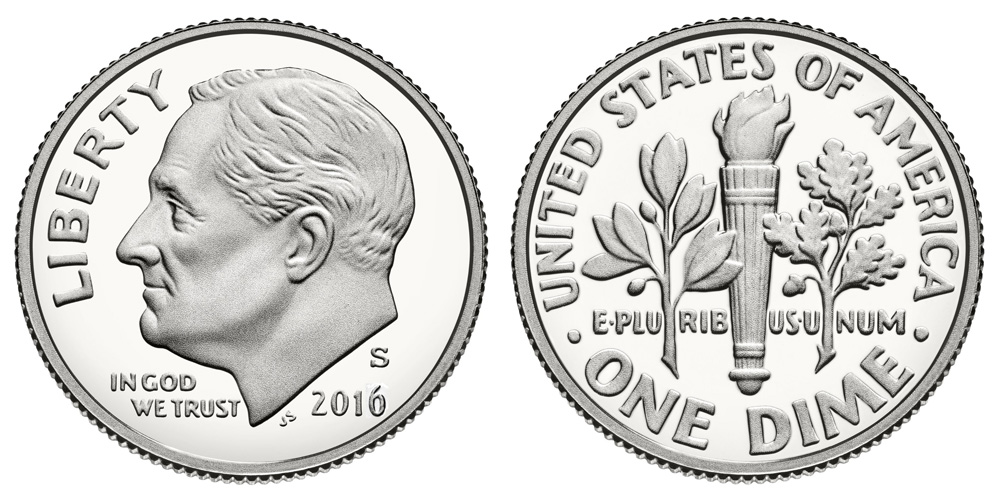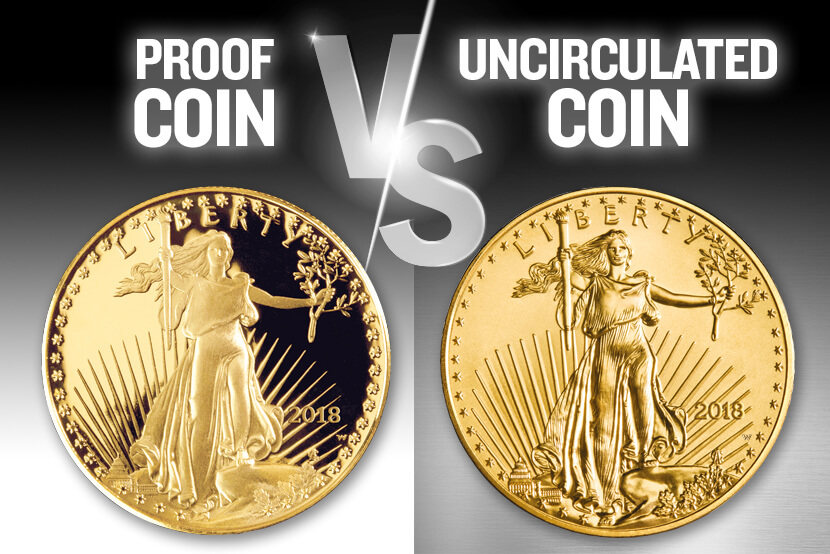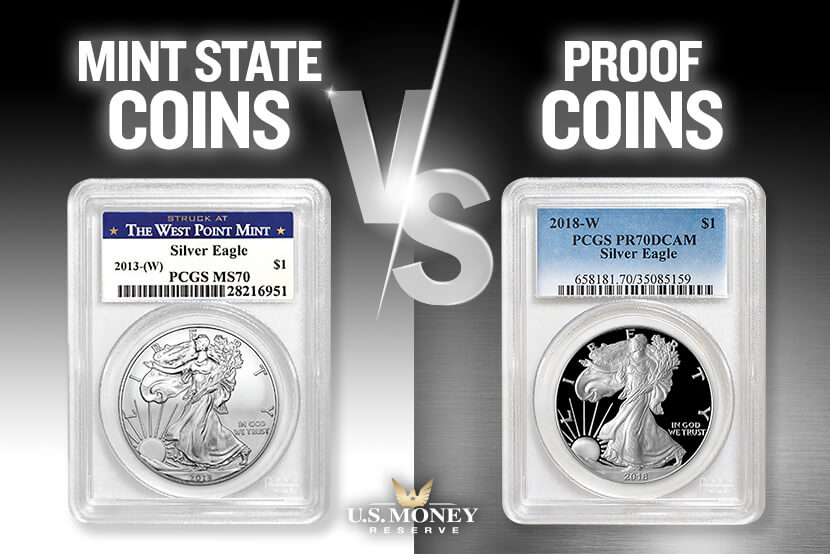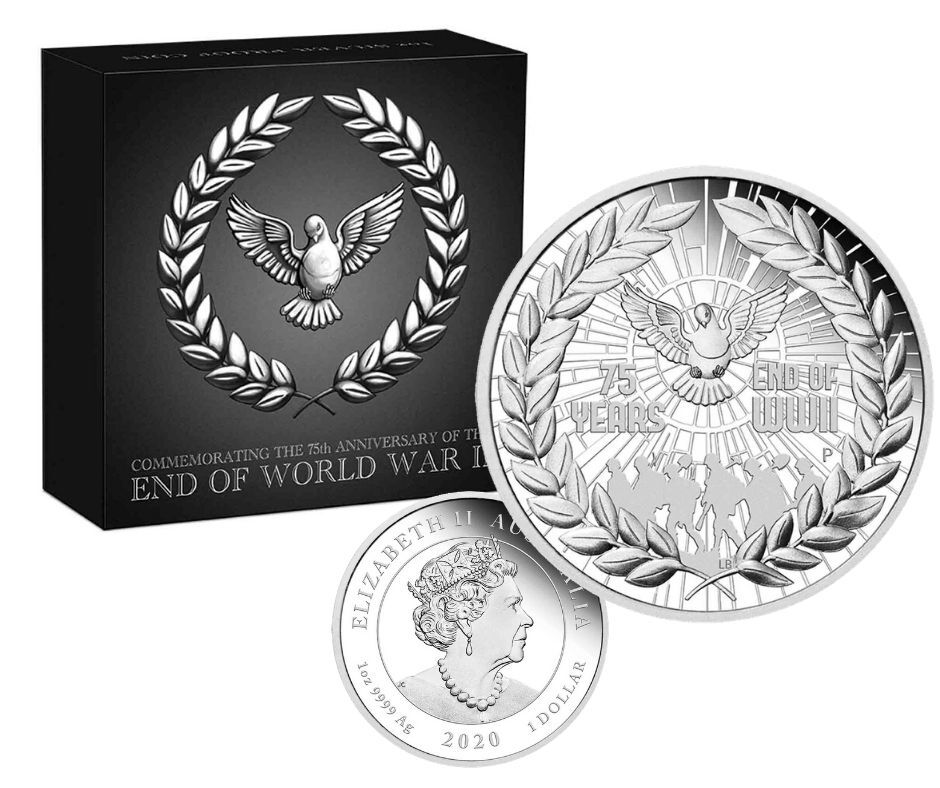Proof Coins

Proof coinage refers to special early samples of a coin issue, historically made for checking the dies and for archival purposes, but nowadays often struck in greater numbers specially for coin collectors (numismatists).[1] Nearly all countries have issued proof coinage.[2]
Preparation of a proof striking usually involved polishing of the dies. They can usually be distinguished from normal circulation coins by their sharper rims and design, as well as much smoother 'fields' – the blank areas not part of the coin's design.
Proof Coins Definition
- If Proof Coins Are Worthwhile, Are Classic Proof Sets or Mint Sets Better? Throughout the height of this coin collecting boom of this mid-1950s during the early '60s, a collector might easily buy proof sets or mint places right in the U.S. Mint and flip them around to the closest coin dealer to acquire a profit of maybe 50 cents to a buck.
- A Proof coin is a coin struck using a special, high-quality minting process to produce coins, especially for collectors. Modern Proof coins often have mirror-like fields and frosted devices. Proof coins struck before the mid-twentieth century are often distinguished only by their high-quality surfaces.
- 2020 S Proof Set 2020 US Mint Proof Set 10 Coins Clad Deep Cameo Proofs Uncirculated Proof. 4.8 out of 5 stars 11. Get it as soon as Thu, Aug 6.
The dies for making modern proof coins are often treated with chemicals to make certain parts of the design take on a frosted appearance, with the polished fields taking on a mirror finish. Several other methods have been used in the past to achieve this effect, including sand blasting the dies, and matte proofs. Proof coins of the early 19th century even appear to be scratched, but it was part of the production process. The term 'proof' refers to the process by which the coins are made and not to the condition of the coin. Certification agencies can grade and assign numerical ratings for proof coins. A PR70 coin is the highest grade possible for a proof coin and indicates a perfect example, with PR69 and lower grades reflecting some deficiency in the strike, centering, details, or other aspect of the coin.
Find the current Proof Sets values by year, coin varieties, and specific grade.

Most proof coins are double struck under higher pressure. This does not normally result in doubling that is readily observable, but does result in the devices being struck fully. After being struck, they are separately and individually handled, in contrast to normal coins which are thrown into bins.
United States proof coins[edit]
The U.S. had largely stopped striking proof coins in 1916, although a few later specimens exist. From 1936 to 1942, proof coins could be ordered individually from the United States Mint. Beginning in 1950, customers could order proof coins only as complete sets.
From 1950 to 1955, proof sets were packaged in a box and each of the five coins was sealed in a cellophane bag. 1955 saw both the original 'box' packaging and introduced the flat-pack, where the coins were sealed in cellophane and presented in an envelope. The flat-pack packaging continued through 1964, after which the coins were sealed in various styles of hard plasticized cases. (From 1965 to 1967 the production of proof sets was suspended and Special Mint Sets were made in their place. They were made at the San Francisco Assay Office but bore no 'S' mintmark.)
Sets struck from 1936 to 1942 (1942 offered a five-coin and a six-coin version, the latter included the silver wartime nickel) and from 1950 to 1972 include the cent, nickel, dime, quarter, and half dollar. From 1973 through 1981 the dollar was also included, and also from 2000 on. The 1999–2008 proof sets also contain five different 50 State quarters. The 2004–2005 series also contain the two Lewis and Clark nickels. The 2007-2016 proof sets also include Presidential dollars. The 2010-2021 proof sets also contain America the Beautiful quarters, depicting different National Parks and Monuments. Proof sets issued in 2009 contain 18 coins – the most ever included – as that year featured four different reverses for the Lincoln Cent, six quarters issued under the District of Columbia and United States Territories quarters program, four Presidential and one Native American dollar struck that year, and the five cent, dime, and half dollar coins. Proof sets containing only 2009 cents, 50 State quarters, America the Beautiful quarters, Presidential dollars, and American Innovation dollars are also available.
The U.S. Mint has also released special proof sets, such as in 1976, when a proof set of three 40% silver-clad coins: the quarter, half-dollar and dollar coins depicting special reverses to commemorate the U.S. Bicentennial was issued. From 1971 to 1974, proof silver-clad Eisenhower dollars were issued in a plastic case contained in a brown wood-grain finish slipcase box, and are referred to as 'Brown Ikes'. Proof Susan B. Anthony dollars were struck in 1999. Although these proof dollars were sold separately and not included in the proof sets for that year, some third parties used the cases from other years to create 1999 proof sets that include the dollar, prompting the U.S. Mint to advise the public that these sets were not government-issued sets. A proof 'Coin & Chronicles' set was issued for 2009, which included one each of the 4 different Lincoln Cent designs and a commemorative Lincoln Silver Dollar, presented in special packaging. Other sets, called 'Prestige Proof' sets, also contain selected commemorative coins. These sets were sold from 1983 to 1997 (except 1985) at an additional premium. As Legacy Proof sets, the practice was resumed from 2005 to 2008.
Occasionally, there are errors which escape the Mint's inspection process, resulting in some very rare and expensive proof sets. This has happened at least seven times: 1968-S, 1970-S and 1975-S and in the 1983-S Prestige set, each with a dime that has no mint mark; a small number of 1971-S sets included a nickel without a mint mark; 1990-S saw both regular and Prestige sets which included a penny with no mint mark.
Not as rare (or as expensive) are proof sets issued with coin varieties that are less common than those found in other sets issued in the same year. These include the 1960 and 1970-S sets, both of which are found in either a 'small date' or 'large date' variety, which refers to the size and position of the date on the Lincoln cent. The 1979-S and 1981-S sets each come in either a 'Type I' or a 'Type II' version, where on all coins the 'S' mint mark is either 'filled' (also known as the 'blob' mint mark) or 'clear'. 1964 has a design variation where the President's portrait on the Kennedy half-dollar has 'accented hair'. The design was modified early in the production (reputedly at the request of Jacqueline Kennedy) to give the hair a smoother appearance. This resulted in the 'accented hair' variety being somewhat rarer and commanding a premium over the 'regular' variety.

Since 1992 the mint has struck proof sets in both silver and base metal. Also, 'Silver Premier' sets, featuring deluxe packaging, were offered from 1992 to 1998. U.S. commemorative and bullion platinum, palladium, gold, and silver coins are also often issued in both uncirculated and proof types, sometimes with different mint marks.
Starting in 1947 the U.S. mint began producing 'mint sets', and because of the terms used there is some confusion over the difference between these and proof sets. These are uncirculated coins that have been specially packaged, and are generally neither as expensive nor as valuable as proofs. There are some exceptions, however. Those produced from 1947-58 (none were made in 1950) were double sets packaged in cardboard holders and have good collector demand. Because mint sets contain specimens from each mint the precious metal value of the coins in a mint set could exceed the value of a proof set for common dates. Another exception is the 1996 mint set, which, in addition to specimens from the Philadelphia and Denver mints, contained a Roosevelt dime from the West Point mint (commemorating the 50th anniversary of the Roosevelt dime) and which was available only in this mint set. From 1965-67 the mint did not sell proof or uncirculated coins, but only a hybrid product, 'special mint sets', none of which are particularly valuable. From 2005 through 2010 the U.S. Mint used a special 'satin finish' on the coins in its uncirculated sets, but in 2011 changed to a 'brilliant finish' so that contact marks incurred during the normal production process would be less noticeable.
The Philadelphia and Denver mints also sold annual 'souvenir sets' from their gift shops since 1973 (1972 for Denver). These are not mint sets and generally not of high collectable value, although the 1982 and 1983 sets are in demand, since no 'official' mint sets were issued during those years. Sales of the souvenir sets ended in 1998 with the launch of the 50 State quarters. Finally, individual dealers have made unofficial 'year sets', privately packaging all denominations of a certain date. The latter have no value beyond their individual coins. Members of the public should be careful to understand what products they are being offered, and that, until supplies are exhausted, current and previous mint and proof sets are available directly from the mint.
Us Mint Proof Sets Price Guide
See also[edit]
References[edit]
- ^George Greenlief Evans (1892). Illustrated History of the United States Mint: With Short Historical Sketches and Illustrations of the Branch Mints and Assay Offices, and a Complete Description of American Coinage ... G. G. Evans. pp. 178–.
- ^'Proof Coinage Catalog'. Colnect. Retrieved September 18, 2014.
Sources[edit]

- Dannreuther, John W. (2004). Official Guide to Coin Grading and Counterfeit Detection (2nd ed.). New York: House of Collectibles. p. 432. ISBN0-375-72050-2.
History of Proof Coins
Since the beginning of coin mintage, proof coins were simply the first ones to go through the press: if one version of a coin wasn’t up to standard, it was corrected until it was deemed satisfactory for mass minting. Because historic proof coins often contained errors that were later corrected, their rarity and unique distinctions make them desirable for collectors today.
The United States Mint temporarily stopped proof coinage during World War One to prevent wasted metal. By the 1930s, the Depression caused a lot of the big changes to U.S. currency: economic hardship forced the government to remove gold coins from circulation while also creating “bank holidays” to prevent a run on cash. In 1936, the Mint reinstated proof coins in order to make sure that entire batches did not turn out ruined. When they did so, the Mint also began selling proof coins directly to collectors at a premium. Today, proof coins are recognized as being more valuable and rare than circulated coins.
Proof Coins Today
Today, because of the element of rarity, proof coins have evolved into the highest quality coins that a mint can produce. They are no longer used to catch errors, but to showcase the best in coinage, and are sold usually in limited quantities with guaranteed purity and a certificate of authenticity. Proof coins can be added to a numismatic collection, a precious metals IRA, or other precious metals investments because they are certified as high quality investment coins—unparalleled in brilliance, luster, beauty, purity, and craftsmanship.
American Proof Coins
American Eagle Gold Proof
Recapturing the legendary beauty of the famous Augustus Saint-Gaudens Lady Liberty design, the American Eagle gold coin was authorized in 1985 by the Gold Bullion Coin Act. This popular coin comes in three sizes: 1 oz, ½ oz, ¼ oz and 1/10 oz. The gold content is guaranteed by the United States. The proof version carries a “W” mark below the date to indicate special minting at the West Point Mint in New York.
Numismatists value this American Eagle as a proof coin for its fine detail and incorporation of many artistic elements, including the reverse with a male eagle with an olive branch and a nesting female eagle. The inscriptions include LIBERTY on the obverse and UNITED STATES OF AMERICA, IN GOD WE TRUST, and E PLURIBUS UNUM on the reverse. Also shown is the coin’s face value and weight. Each of the coins is made of 91.67% gold (22 karat), with silver and copper alloys to provide more durability: 3% silver and 5.33% copper.
Everything you need to know to get started in Precious Metals
Learn how precious metals can strengthen your portfolio, protect your assets and leverage inflation.
American Eagle Silver Proof
Since its authorization in 1985 and first minting in 1986, the American Eagle silver proof coin has been a favorite for bullion buyers and coin collectors alike, serving as the official American silver bullion coin. Resurrecting the much-admired Adolph A. Weinman “Walking Liberty” design on the obverse, the reverse carries a John Mercanti rendition of the federal shield. The date, LIBERTY and IN GOD WE TRUST are inscribed on the front, while the reverse includes the mint mark (Philadelphia Mint, the San Francisco Mint, or the West Point Mint), UNITED STATES OF AMERICA, E PLURIBUS UNUM, and 1 OZ. FINE SILVER~ONE DOLLAR. This coin is only available in the version guaranteed to contain one troy ounce of 99.9% pure silver. The U.S. Mint certifies the coin’s purity, weight and content.
The proof version of the American Eagle Silver Dollar provides an excellent investment coin, highlighting the fine detail of the iconic Walking Liberty obverse (seen on U.S. half-dollars from 1916 to 1947). The reverse is also majestic, featuring details that include the heraldic eagle with arrows and olive branches in its talons and the banner bearing E PLURIBUS UNUM in its mouth. The eagle is protected by the federal shield and is positioned below 13 stars that represent the original 13 colonies.
American Eagle Platinum Proof

The official American platinum bullion coin has been minted as the American Platinum Eagle by the U.S. Mint since 1997. This coin has the distinction of being the only platinum bullion coin that the United States government guarantees in content, weight and .9995 purity. This coin comes in four sizes: 1 oz, ½ oz, ¼ oz and 1/10 oz. However, after 2008 the U.S. Mint stopped producing fractional coin sizes due to lack of platinum supply. Since then, only 1 oz coins are being newly minted. This coin also has the unique position of being qualified for holding in a precious metals IRA since it is considered a commodity, not just a collectible.
The intricate design of American Eagle Platinum proof coin qualifies it as a highly desirable numismatic item, especially due to the fact the reverse design is changed each year. The obverse design incorporates a close-up view of the Statue of Liberty, the date of minting, and the inscriptions LIBERTY, IN GOD WE TRUST and E PLURIBUS UNUM. The reverse design includes the inscription UNITED STATES OF AMERICA and the coin’s weight and face value. Uncirculated and proof versions of the American Platinum Eagle offer different designs each year as part of the mint’s “Vistas of Liberty” program. Past designs of the Platinum American Eagle have provided various scenes depicting different parts of the country, as well as a “The Foundations of Democracy” version that highlight the three branches of the U.S. government.